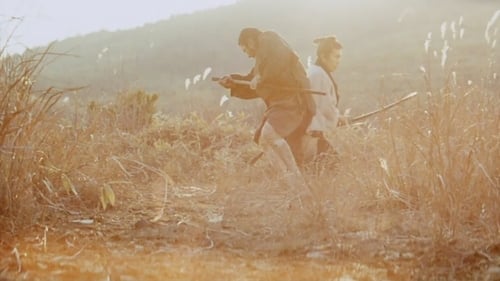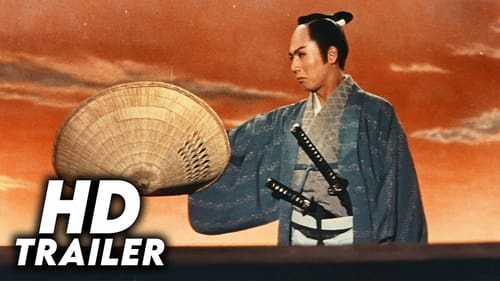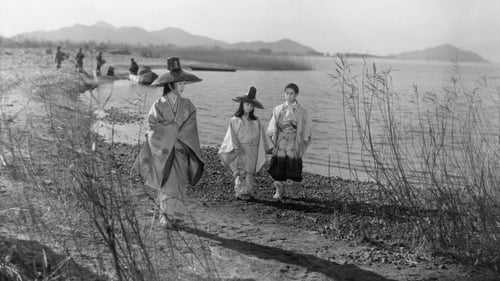
Vigésimo tercera de las veintiséis películas basadas en el personaje de Zatoichi interpretado por Shintarô Katsu. Zatoichi se encuentra en su camino a una mujer embarazada que acaba de ser atacada por un bandido. Las cosas se complican y Zatoichi debe hacer de comadrona en ese momento, pero la mujer muere durante el parto, y Zatoichi se encarga de llevar el bebé a su familia. Una vez encuentra a la familia del bebé, descubre que la mujer embarazada llevaba 20 ryus que debía pagar al jefe de una banda para que su cuñada no fuera obligada a ingresar en un burdel.

A former soldier, reduced to working at a restaurant post-war, becomes a contract killer for the yakuza gangs he's in contact with.

Abare inu is a 1965 action-comedy film directed by Kazuo Mori. It is the fourth film in the series.

[Period covered: 1595-1600] Third film in the famous shinobi no mono series. We last saw ninja Ishikawa Goemon (Raizo Ichikawa), as he was about to be boiled alive. But a good ninja is both hard to find, and even harder to kill. With the help of the enigmatic Hattori Hanzo, Goemon lives to skulk another day, and sets his sights on bringing down the warlord who tried to turn him into soup – Toyotomi Hideyoshi. And as always, in the background, the suble hand of Tokugawa Ieyasu is pulling strings as he plots to rule all of Japan!

Segunda de las veintiséis películas basadas en el personaje de Zatoichi interpretado por Shintarô Katsu. En esta segunda entrega, Zatoichi se encuentra a un hombre, el cual carece de un brazo por culpa de un ataque de Zatoichi, celoso de él ante la posibilidad de perder a su amada...

Shôji Yasui
Satoko is a mistress by trade or fate: when her master, the silkscreen artist of the Kohoan Temple in Kyoto, dies, she is given to the temple's lascivious head priest Kikuchi. She is drawn to a melancholy young acolyte, Jinen, who has observed the profligacy of his cruel master and Satoko's utter dependence on the man. Jinen is both fascinated and disturbed by Satoko's interest in him; he is similarly caught between loathing of Kikuchi and of the dark circumstances of his birth and his own moral weakness. The story unfolds in a dreamlike manner—a flashback inspired by a now-infamous image on a silkscreen in the souvenir shop at the so-called Temple of the Wild Geese.

This is the story of a blind masseur who tricks people, steals, and kills; he is the anti-Zatoichi

The exciting story of Jirocho and his yakuza gang that controlled the area of the Tokaido during the latter days of the samurai era. Awesome fighting from Katsu Shintaro as One-Eyed Ishimatsu highlights this great tale taken from Japanese history!

Two amiable samurai wind up on opposite sides of the vendetta between Lord Asano's retainers and the family of Lord Kira that led to the famous revenge of the 47 Ronin.

Legendary yakuza Shimizu Jirocho and his 28 henchmen travel the unruly path from a 'Fire Festival' in Akiba to a decisive battle by the Fujigawa.

Film directed by Kenji Misumi.

Worker
Adaptación de una obra de teatro (kabuki) del siglo XVII de Chikamatsu Monzaemon. Osan vive en Kioto y está casada con Ishun, un rico y tacaño funcionario. Cuando Osan es acusada falsamente de tener una relación con Mohei, ambos huyen rápidamente de la ciudad. Ishun, por su parte, ordena a sus hombres que los encuentren y los separen para evitar el escándalo.

Sado man
A finales de la Era Heian en el siglo XII, el gobernador de un pueblo es enviado al exilio. A pesar de que su familia quiere ir con él, ninguno podrá acompañarle, pues, engañados por una vieja que se hace pasar por sacerdotisa, son vendidos como esclavos por separado: la madre por un lado y los hijos por otro.

Book-keeper
Shinnosuke acepta casarse con Shizu con tal de poder estar cerca de su hermana Oyu, viuda y madre de un hijo. Las costumbres japonesas prohíben que Oyu se case porque su deber es educar a su hijo para que llegue a ser el jefe de la familia de su marido. Entre los tres se creará un extraño vínculo. (FILMAFFINITY)

Jewel thieves become interested in an invisibility formula invented by Professor Nakazato and want to use his invention to acquire a diamond necklace called the "Tears of Amour."

A 1946 Japanese film directed by Keigo Kimura.










